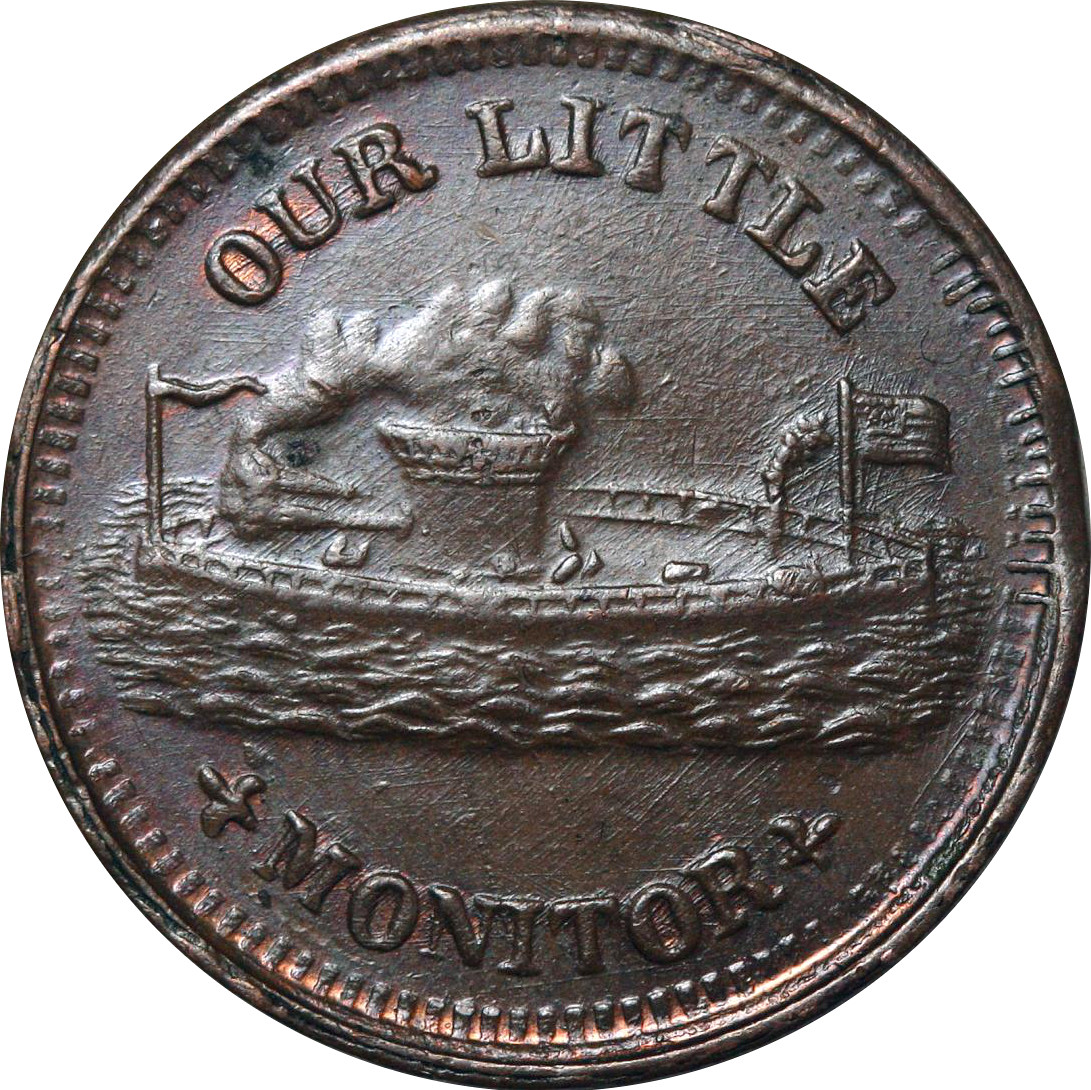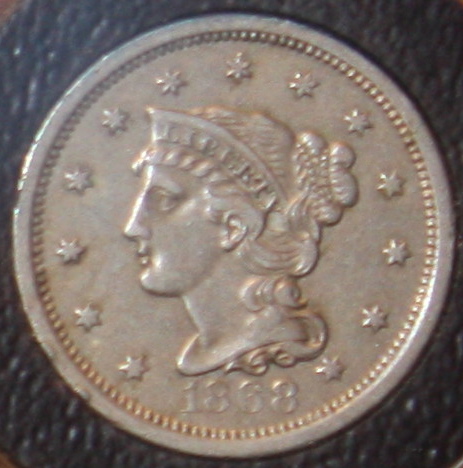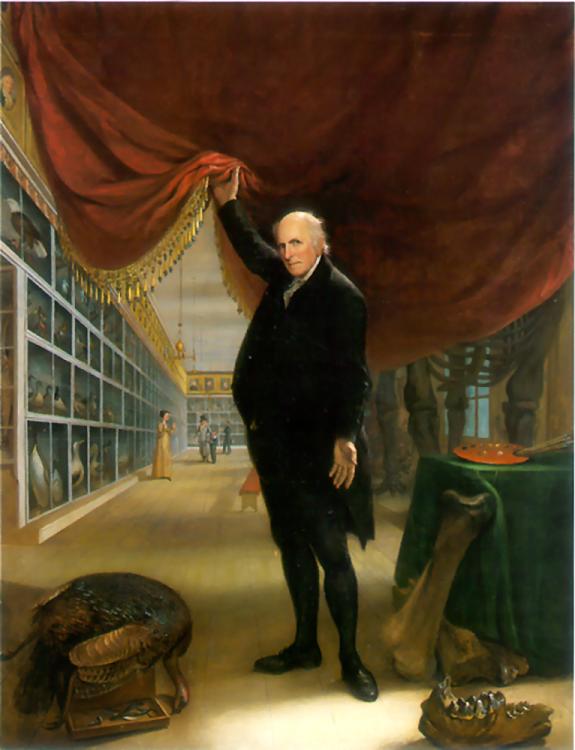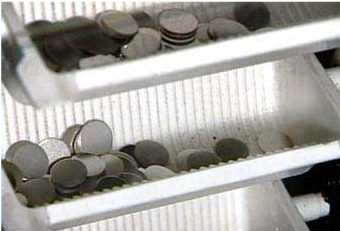|
Two-cent Piece (United States)
The two-cent piece was produced by the Mint of the United States for circulation from 1864 to 1872 and for collectors in 1873. Designed by James B. Longacre, there were decreasing mintages each year, as other minor coins such as the nickel Nickel is a chemical element; it has symbol Ni and atomic number 28. It is a silvery-white lustrous metal with a slight golden tinge. Nickel is a hard and ductile transition metal. Pure nickel is chemically reactive, but large pieces are slo ... proved more popular. It was abolished by the Mint Act of 1873. The economic turmoil of the American Civil War caused government-issued coins, even the non-silver Indian Head cent, to vanish from circulation, hoarded by the public. One means of filling this gap was Civil War token, private token issues, often made of bronze. The cent at that time was struck of a copper-nickel alloy, the same diameter as the later Lincoln cent, but somewhat thicker. The piece was difficult for the Philadelphia ... [...More Info...] [...Related Items...] OR: [Wikipedia] [Google] [Baidu] |
United States Dollar
The United States dollar (Currency symbol, symbol: Dollar sign, $; ISO 4217, currency code: USD) is the official currency of the United States and International use of the U.S. dollar, several other countries. The Coinage Act of 1792 introduced the U.S. dollar at par with the Spanish dollar, Spanish silver dollar, divided it into 100 cent (currency), cents, and authorized the Mint (facility), minting of coins denominated in dollars and cents. U.S. banknotes are issued in the form of Federal Reserve Notes, popularly called greenbacks due to their predominantly green color. The U.S. dollar was originally defined under a bimetallism, bimetallic standard of (0.7734375 troy ounces) fine silver or, from Coinage Act of 1834, 1834, fine gold, or $20.67 per troy ounce. The Gold Standard Act of 1900 linked the dollar solely to gold. From 1934, its equivalence to gold was revised to $35 per troy ounce. In 1971 all links to gold were repealed. The U.S. dollar became an important intern ... [...More Info...] [...Related Items...] OR: [Wikipedia] [Google] [Baidu] |
Uriah Tracy
Uriah Tracy (February 2, 1755July 19, 1807) was an American lawyer and politician from Connecticut. He served in the US House of Representatives (1793 to 1796) and the US Senate (1796 to 1807). From May to November 1800, Tracy served as President pro tempore of the United States Senate. Youth, family life and early career Tracy was born in Franklin in the Connecticut Colony. In his youth, he received a liberal education. His name is listed among those in a company from Roxbury that responded to the Lexington Alarm at the beginning of the American Revolutionary War. He later served in the Roxbury Company as a clerk. In 1778, Tracy graduated from Yale University, his contemporaries including Noah Webster. He was admitted to the bar in 1781 and then practiced law in Litchfield for many years. Tracy had five children with Susannah Bull; Sally, Susan, Julia, George and Caroline. All five would survive to adulthood. His daughter Sally was married to jurist James Gould. Politic ... [...More Info...] [...Related Items...] OR: [Wikipedia] [Google] [Baidu] |
Numismatics
Numismatics is the study or collection of currency, including coins, tokens, paper money, medals, and related objects. Specialists, known as numismatists, are often characterized as students or collectors of coins, but the discipline also includes the broader study of money and other means of payment used to resolve debts and exchange good (economics), goods. The earliest forms of money used by people are categorised by collectors as "odd and curious", but the use of other goods in barter exchange is excluded, even where used as a circulating currency (e.g., cigarettes or instant noodles in prison). As an example, the Kyrgyz people used horses as the principal currency unit, and gave small change in sheepskin, lambskins; the lambskins may be suitable for numismatic study, but the horses are not. Many objects have been used for centuries, such as Cowry, cowry shells, precious metals, Cocoa beans#History, cocoa beans, Rai stones, large stones, and Gemstone, gems. Etymology Firs ... [...More Info...] [...Related Items...] OR: [Wikipedia] [Google] [Baidu] |
Pattern Coin
A pattern coin is a coin which has not been approved for release, but produced to evaluate a proposed coin design. They are often off-metal strike (using metals of lower value to test out the dies), to proof standard or piedforts. Many coin collectors collect and study pattern coins because of their historical importance. Many of the world's most valuable coins are pattern coins; nearly 25 of the pieces listed in ''100 Greatest US Coins'' are pattern coins. English patterns The first English coin that can be identified with certainty is a groat, originally worth fourpence. This piece, an example of which was illustrated and sold in the Dodsley Cuff sale of the mid-19th century, had crowns in place of the usual three pellets in each quarter of the reverse. Patterns are particularly identifiable and exist in larger numbers from the reign of Elizabeth I onwards. The experimental base metal issues of all coinage prior to the mid-18th century have been well preserved. Boulton's ... [...More Info...] [...Related Items...] OR: [Wikipedia] [Google] [Baidu] |
Salmon P
Salmon (; : salmon) are any of several list of commercially important fish species, commercially important species of euryhaline ray-finned fish from the genera ''Salmo'' and ''Oncorhynchus'' of the family (biology), family Salmonidae, native to tributary, tributaries of the North Atlantic (''Salmo'') and North Pacific (''Oncorhynchus'') basins. ''Salmon'' is a colloquial or common name used for fish in this group, but is not a scientific name. Other closely related fish in the same family include trout, Salvelinus, char, Thymallus, grayling, Freshwater whitefish, whitefish, lenok and Hucho, taimen, all coldwater fish of the subarctic and cooler temperate regions with some sporadic endorheic populations in Central Asia. Salmon are typically fish migration, anadromous: they hatch in the shallow gravel stream bed, beds of freshwater headstreams and spend their juvenile fish, juvenile years in rivers, lakes and freshwater wetlands, migrate to the ocean as adults and live like sea ... [...More Info...] [...Related Items...] OR: [Wikipedia] [Google] [Baidu] |
James Pollock (American Politician)
James Pollock (September 11, 1810 – April 19, 1890) was the 13th governor of Pennsylvania from 1855 to 1858. Political career James Pollock graduated from the College of New Jersey at Princeton before setting up a law practice in his home community, in Milton, Pennsylvania. District attorney and judicial appointments followed and in 1844 he was elected to the United States House of Representatives where he served three successive terms. As a freshman congressman, Pollock boarded in the same rooming house as another new congressman, Abraham Lincoln (who would later become the 16th President of the United States), and they soon developed a mutual respect and longstanding friendship. Pollock was an early supporter of Samuel Morse and his idea for a telegraph and was instrumental in getting the United States Congress to appropriate a small amount to help build the first line. He was present in the room when the first message, "What hath God wrought" was received, ushering in ... [...More Info...] [...Related Items...] OR: [Wikipedia] [Google] [Baidu] |
Flying Eagle Cent
The Flying Eagle cent is a one- cent piece struck by the Mint of the United States as a pattern coin in 1856 and for circulation in 1857 and 1858. The coin was designed by Mint Chief Engraver James B. Longacre, with the eagle in flight based on the work of Longacre's predecessor, Christian Gobrecht. By the early 1850s, the large cent (about the size of a half dollar) being issued by the Mint was becoming both unpopular in commerce and expensive to mint. After experimenting with various sizes and compositions, the Mint decided on an alloy of 88% copper and 12% nickel for a new, smaller cent. After the Mint produced patterns with an 1856 date and gave them to legislators and officials, Congress formally authorized the new piece in February 1857. The new cent was issued in exchange for the worn Spanish colonial silver coin that had circulated in the U.S. until then, as well as for its larger predecessor. So many cents were issued that they choked commercial channels, especiall ... [...More Info...] [...Related Items...] OR: [Wikipedia] [Google] [Baidu] |
Large Cent (United States Coin)
The United States large cent was a coin with a face value of of a United States dollar. Its nominal diameter was 1 inch (28.57 mm). The first official mintage of the large cent was in 1793, and its production continued until 1857, when it was officially replaced by the modern-size one-cent coin (commonly called the penny). Large cents were made of nearly pure copper, or copper as pure as it emerged from smelting, without any deliberate addition of other metals (such as occurs in bronze). General history First struck in 1793, the large cent was minted every year from 1793 to 1857, except 1815. When the United States declared war in 1812 against Great Britain, coinage was affected. The wartime embargo against shipments made it so the mint could not get any new copper planchets, which were imported from Great Britain, to strike coins. The mint made do with what supply it had and struck coins into 1815. After the war ended in 1815, the mint wasted no time in ordering new pla ... [...More Info...] [...Related Items...] OR: [Wikipedia] [Google] [Baidu] |
1836 P2C Two Cents (Judd-52) (obv)
Events January–March * January 1 — Hill Street Academy is named Colombo Academy and acquired by the Government, establishing the first public school in Sri Lanka. * January 1 – Queen Maria II of Portugal marries Ferdinand II of Portugal, Prince Ferdinand Augustus Francis Anthony of Saxe-Coburg-Gotha. * January 5 – Former U.S. Representative Davy Crockett of Tennessee arrives in Texas to join the Texan fight for independence from Mexico. * January 12 ** , with Charles Darwin on board, reaches Sydney. ** Will County, Illinois, is formed. * February 8 – London and Greenwich Railway opens its first section, the first railway in London, England. * February 23 – Texas Revolution: The Battle of the Alamo begins, with an American settler army surrounded by the Mexican Army, under Antonio López de Santa Anna, Santa Anna. * February 25 – Samuel Colt receives a United States patent for the Colt Firearms, Colt revolver, the first revolving barrel multishot firearm. * Mar ... [...More Info...] [...Related Items...] OR: [Wikipedia] [Google] [Baidu] |
Franklin Peale
Benjamin Franklin Peale (born Aldrovand Peale; October 15, 1795 – May 5, 1870) was an American officer of the Philadelphia Mint from 1833 to 1854. Although Peale introduced many innovations to the Mint of the United States, he was eventually dismissed amid allegations he had used his position for personal gain. Peale was a son of painter Charles Willson Peale, and was born in the Philadelphia Museum, a museum of curiosities which his father ran in Philadelphia. For the most part, Franklin Peale's education was informal, though he took some classes at the University of Pennsylvania. He became adept in machine making. In 1820, he became an assistant to his father at the museum, and managed it after Charles Peale's death in 1827. In 1833, Peale was hired by the Mint, and was sent for two years to Europe to study and report back on coining techniques. He returned with plans for improvement, and designed the first steam-powered coinage press in the United States, installed i ... [...More Info...] [...Related Items...] OR: [Wikipedia] [Google] [Baidu] |
Christian Gobrecht
Christian Gobrecht (December 23, 1785 – July 23, 1844) was the third Chief Engraver of the United States Mint from 1840 until his death in 1844. He was responsible for designing the famous " Seated Liberty" designs, which were in turn the direct inspiration for the design of the Trade Dollar. He designed the Gobrecht Dollar, which was struck in small quantities from 1836 to 1838 and later inspired the Flying Eagle cent. He also designed the obverse sides for the Liberty head (aka Coronet Head) Quarter Eagle, Half Eagle, and Eagle gold coins, as well as the "braided hair" type Half cent and Large cent coins. Early life and career Gobrecht was born on December 23, 1785, in Hanover, Pennsylvania, to Reverend John C. Gobrecht, who came to America from Germany in 1755, and Elizabeth Sands, with ancestry going back to 1642 in Plymouth Colony. After apprenticing in Manheim, Pennsylvania, he engraved ornamental clockworks in Baltimore, Maryland, until he moved to Philadelphia in ... [...More Info...] [...Related Items...] OR: [Wikipedia] [Google] [Baidu] |
Planchet
A planchet is a round metal disk that is ready to be struck as a coin. An older word for planchet is flan. They are also referred to as blanks. History The preparation of the flan or planchet has varied over the years. In ancient times, the flan was heated before striking because the metal that the coin dies were made of was not as hard as dies today, and the dies would have worn faster and broken sooner had the flan not been heated to a high temperature to soften it. An unusual method was used to mint the one-sided, bowl-shaped ''pfennigs'' of the Holy Roman Empire. The planchet used for these so-called '' Schüsselpfennigs'' was larger than the coin die itself. The coins were made by striking with only one upper die on the larger planchet. As a result, the perimeter of the planchet was pressed upwards in the shape of a bowl or plate. Until the 18th century they were minted mainly in the Harz Mountains. The curved shape of the pfennig was very useful for handling small chan ... [...More Info...] [...Related Items...] OR: [Wikipedia] [Google] [Baidu] |










